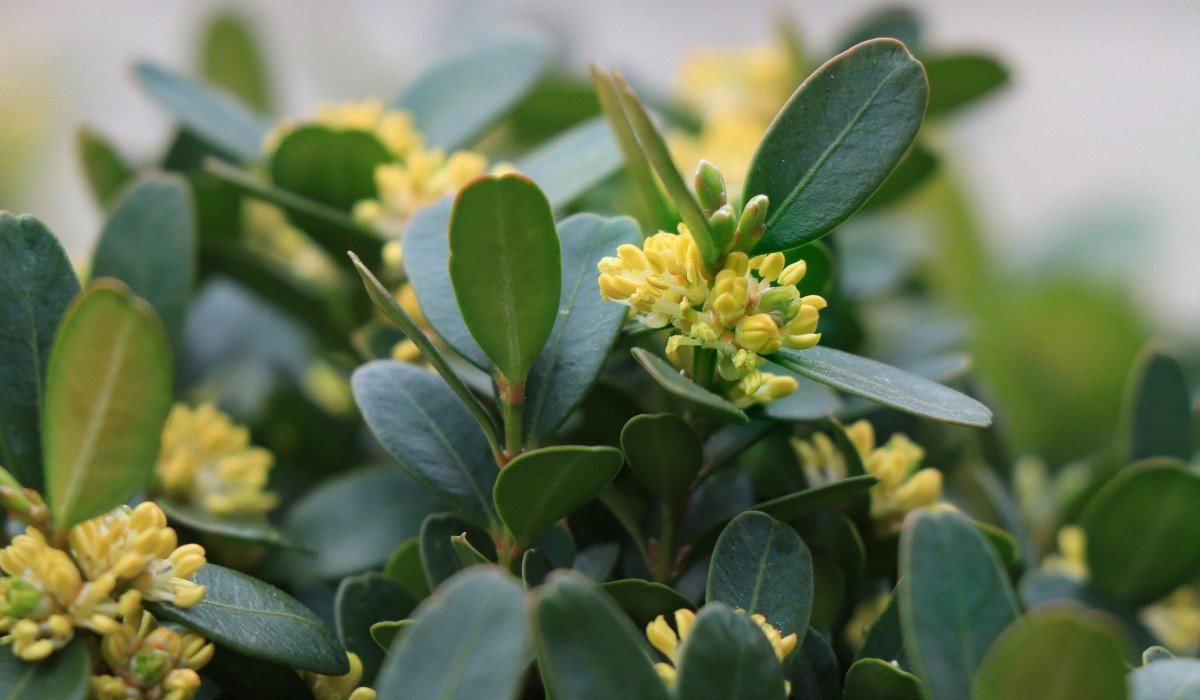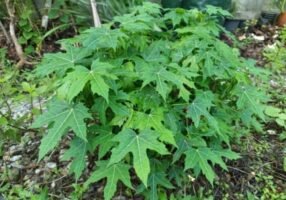The British native Buxus sempervirens, also known as the common box, is most frequently used for hedging and landscaping because of its lush growth and thin, evergreen leaves. Their green hue varies in intensity, becoming darker at the top and lighter at the bottom.
The shrubs’ vigorous crowns are unaffected by regular trimming, so they can be regularly pruned to maintain their desired form and size.
This plant reaches its peak of beauty in the heart of spring. The yellowish-green colour of the blossoms makes them nearly invisible, making the flowers’ powerful scent the only thing that draws attention to them.

Source: Pinterest
Known about Topiary
Buxus sempervirens: Key facts
| Common name | Common box |
| Botanical name | Buxus sempervirens |
| Family | Buxaceae |
| Sunlight | Full to partial shade |
| Bloom time | April to May |
| Water | medium |
| Maintenance | medium |
See also: Garden roses: Facts and tips to grow
Buxus sempervirens: Features
On an average, a fully grown Buxus sempervirens will stand between 1.8 and 2.4 metres tall. It can reach a height of 9 metres under ideal conditions, with a trunk diameter of 20 cm and a wrinkly brown bark. The vivid green colour of its glossy leaves is preserved throughout the year. It has leathery, elliptical leaves about 1–5 cm in length.
See also: all about Neolamarckia Cadamba
Buxus sempervirens: How to grow
If you want to grow this plant, cuttings are your best bet. Use either softwood, semi-hardwood, or hardwood trimmings. Alternatively, you can propagate from seeds; however, this is a more time-consuming alternative.
Utilise cuttings that are 10-15 cm long if you want to use softwood to propagate. Leaves at the bottom of the cutting should be removed so that they don’t touch the growing media. Plant your cuttings in propagation sand or a basic seed starting mix that you have treated with a growth gel or powder. Honey can be used as an alternative to hormones designed to stimulate growth.
Even while the cuttings will benefit from leaning on each other and growing closer together, giving each one its own pot is still ideal. Erect a heat chamber out of a plastic cover or a plastic bag and set it up in a partially sunny spot.
A warm, humid climate is all they require at this point, as they do not require much in the way of hydration or nutrition. You can transfer them to the garden after around six weeks have passed. The best times to plant are in the fall and spring, when the plants are dormant.
Buxus sempervirens: Maintenance tips
Watering
It thrives when watered regularly, but it can endure intense temperatures if shaded.
Newly planted shrubs need thorough soaking to nourish their roots. After that, it needs twice-weekly watering until maturity, which takes about a year.
The second year requires weekly watering. Once mature, its powerful root system will give all the water and minerals it needs from the earth.
During hot, dry seasons, water it occasionally. Overwatering can drown the plant and rot its roots.
Soil
Soil can be acidic, alkaline, or neutral. Wet, but not goopy. Any of these soil types: chalk, loam, or sand can be used. When repotting, make sure you’re using high-quality compost.
Feeding
Feed your plants throughout the summer with a liquid feed every few weeks and a slow-release fertiliser like Osmacote in the spring. Don’t feed them again until next spring, after the month of August.
Pruning
Buxus sempervirens can be maintained in its intended form by regularly cutting it during the growing season (from June to the end of August). During the first year, trim as little as possible to give the plant time to establish its roots.
Leave the leaves inside the box topiary frame as you prune it. Remove any vegetation that is visible outside of the picture. If necessary, the roots can be cut back.
Buxus sempervirens: Pests
Aphids, leaf-mining moths, thrips, and red spider mites are some of the pests that could potentially cause damage (in hot weather).
Keep an eye out for Box Caterpillars; they’re green with black stripes and patches. They can consume an entire plant’s leaves in one sitting. If you see one, relocate it!

Source: Pinterest
Buxus sempervirens: Uses
- In France, the leaves have been employed as a substitute for hops (Humulus lupulus) in the production of beer. They aren’t particularly nutritious and can likely be harmful.
- The root is particularly popular among turners and cabinetmakers.
- The leaves are cooked in caustic soda and used to tint hair auburn.
Buxus sempervirens: Medicinal benefits
- The bark and leaves have antirheumatic, cathartic, cholagogic, diaphoretic, febrifuge, oxytocic, and vermifuge properties.
- The wood is diaphoretic, narcotic and sedative in full dose, convulsant and emetic-cathartic in overdose.
- The plant’s essential oil has dental benefits.
- Rheumatism sufferers can often be seen using Buxus-based medicines.
Buxus sempervirens: Toxicity
If consumed, the plant is dangerous to both children and dogs; however, it is very seldom fatal. Skin contact may result in mild irritation, but proper handling is normally harmless.
FAQs:
Which fertiliser is ideal for Buxus plants?
Fertilisers high in nitrogen are ideal for Buxus.
How should I care for my Buxus over the winter?
In autumn and winter, Buxus sempervirens should have fallen leaves removed from the top to prevent die-back and plant weakness.
Housing News Desk is the news desk of leading online real estate portal, Housing.com. Housing News Desk focuses on a variety of topics such as real estate laws, taxes, current news, property trends, home loans, rentals, décor, green homes, home improvement, etc. The main objective of the news desk, is to cover the real estate sector from the perspective of providing information that is useful to the end-user.
Facebook: https://www.facebook.com/housing.com/
Twitter: https://twitter.com/Housing
Email: [email protected]











